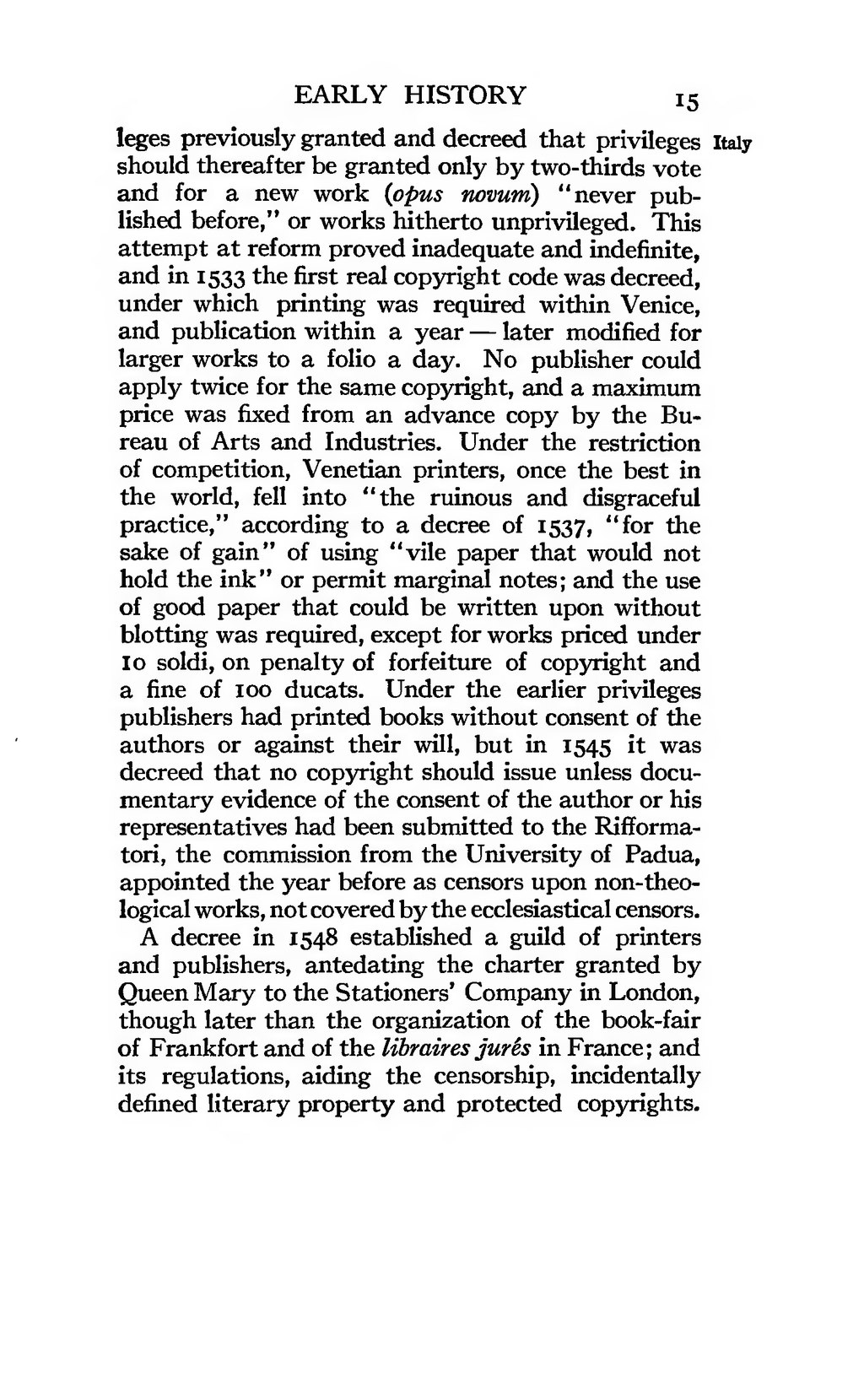legesItaly previously granted and decreed that privileges should thereafter be granted only by two-thirds vote and for a new work (opus novum) "never published before," or works hitherto unprivileged. This attempt at reform proved inadequate and indefinite, and in 1533 the first real copyright code was decreed, under which printing was required within Venice, and publication within a year — later modified for larger works to a folio a day. No publisher could apply twice for the same copyright, and a maximum price was fixed from an advance copy by the Bureau of Arts and Industries. Under the restriction of competition, Venetian printers, once the best in the world, fell into "the ruinous and disgraceful practice," according to a decree of 1537, "for the sake of gain" of using "vile paper that would not hold the ink" or permit marginal notes; and the use of good paper that could be written upon without blotting was required, except for works riced under 10 soldi, on penalty of forfeiture of copyright and a fine of 100 ducats. Under the earlier privileges publishers had printed books without consent of the authors or against their will, but in 1545 it was decreed that no copyright should issue unless documentary evidence of the consent of the author or his representatives had been submitted to the Rifformatori, the commission from the University of Padua, appointed the year before as censors upon non-theological works, not covered by the ecclesiastical censors.
A decree in 1548 established a guild of printers and publishers, antedating the charter granted by Queen Mary to the Stationers' Company in London, though later than the organization of the book-fair of Frankfort and of the libraires jurés in France; and its regulations, aiding the censorship, incidentally defined literary property and protected copyrights.

